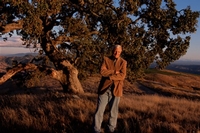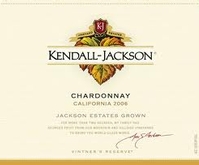Jess Jackson, who lost his battle with cancer last week, sure could pick winners. In the last decade of his life, when he devoted much of his considerable energy to thoroughbred racing, his Stonestreet Farm saddled champion after champion. The roll call included Curlin, both 2007 and 2008’s horse of the year, and Rachel Alexandra, winner of that same award in 2009. (Since the two have since been bred with each other, another equine superstar may soon be on the way.) Racing, however, was only one of Jackson’s winning ventures. First in law, then real estate and business investing, and eventually wine, he made a fortune by spotting emerging trends and backing victors.
2007 and 2008’s horse of the year, and Rachel Alexandra, winner of that same award in 2009. (Since the two have since been bred with each other, another equine superstar may soon be on the way.) Racing, however, was only one of Jackson’s winning ventures. First in law, then real estate and business investing, and eventually wine, he made a fortune by spotting emerging trends and backing victors.
While Jackson enjoyed success in all these fields, his accomplishments in the world of wine were surely the most significant. His Kendall-Jackson brand did more than win its sales races. More than any other single label, it changed how millions of Americans thought about wine in general, and so played a leading role in the United States becoming what it is today–the largest wine-consuming market in the world.
Jackson got into the wine business in 1974, when he converted an eighty-acre pear and walnut orchard near Lakeport, California into a vineyard. Like many others at the time, he saw that wine was finding a new audience in a country that long had shunned it, and wanted to get into the game. Unlike most of the era’s other wine entrepreneurs, however, he focused almost exclusively on wine made for casual, everyday drinking. In 1982, he produced the first vintage of Vintner’s Reserve Chardonnay. Priced at $4.50, it was more expensive than jug “chablis,” but significantly less costly than all the Napa Valley wines then aiming to compete directly with French Bordeaux and Burgundy.
Vintner’s Reserve Chardonnay became a huge hit, its popularity coming in part from its never even trying to echo a foreign model. Instead, this  new wine pioneered a slightly off-dry, tropical-fruit style that millions of people unfamiliar with European crus and cuvées found easy to enjoy. (Paradoxically enough, that style has gone on to be emulated by vintners all over the world, including many in France.) Jackson used grapes from his own vineyard, but as sales grew, he purchased more and more fruit from throughout California. Industry insiders told him that the market demanded a more precise geographical designation. He ignored them. As he told me when I interviewed him almost twenty years later, he recognized that the new generation of American wine drinkers was going to think of wine first and foremost in varietal terms. All that mattered was that the label said “Chardonnay,” and that the wine in the bottle tasted good. “My goal,” he said, “was to broaden the wine-drinking public.”
new wine pioneered a slightly off-dry, tropical-fruit style that millions of people unfamiliar with European crus and cuvées found easy to enjoy. (Paradoxically enough, that style has gone on to be emulated by vintners all over the world, including many in France.) Jackson used grapes from his own vineyard, but as sales grew, he purchased more and more fruit from throughout California. Industry insiders told him that the market demanded a more precise geographical designation. He ignored them. As he told me when I interviewed him almost twenty years later, he recognized that the new generation of American wine drinkers was going to think of wine first and foremost in varietal terms. All that mattered was that the label said “Chardonnay,” and that the wine in the bottle tasted good. “My goal,” he said, “was to broaden the wine-drinking public.”
In later years, Jackson turned his attention to super-premium wines as well. He recognized that consumer tastes were shifting. He never abandoned, however, his commitment to well-made, reasonably-priced wine sold under a label that people could trust. After all, he knew that Vintner’s Reserve, which came to include a bevy of different varietals, was his biggest winner.
4
